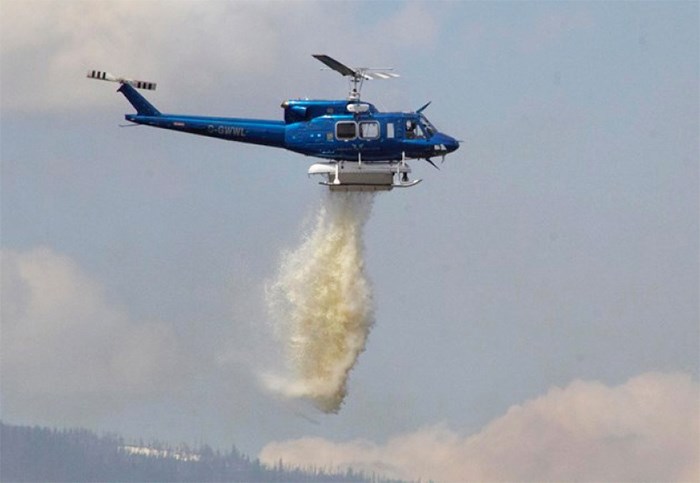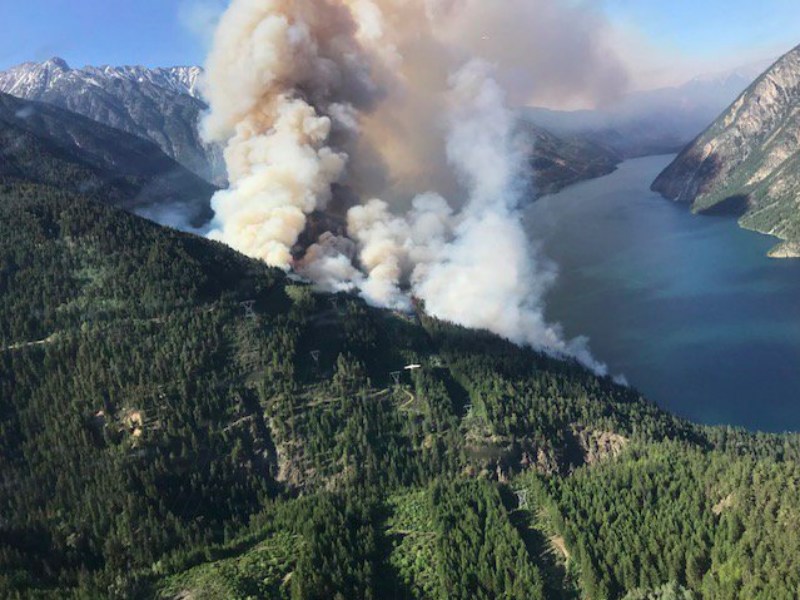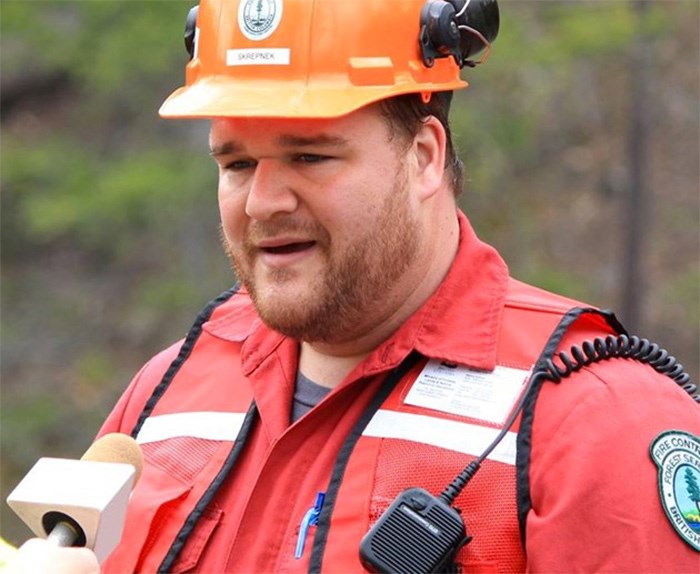 Photograph By BRENDAN KERGIN
Photograph By BRENDAN KERGIN
Continuing hot weather is creating a “new normal” for the Thompson-Nicola region, says B.C.’s chief fire information officer Kevin Skrepne.
“We’ve had a pretty unseasonal hot, dry period,” he told KamloopsMatters May 27. “That’s definitely priming things out there.
“It seems the seasons are getting a little bit longer.”
Asked to elaborate, Skrepnek says what might constitute the new normal is an issue best left for experts and politicians.
Skrepnek says more aggressive-than-normal fire behaviour is being seen this year.
He says such behaviour is not usually seen until July when temperatures are higher.
“What’s unusual is the aggressiveness,” he says. “The fuels are a lot drier than we would see at this time of year.”
He warns if the usual June rains do not come, the situation could be dire.
That’s what happened last year.
“June rain is a critical factor,” he explains.
He says in 2017, “we had a wet April and wet May but in June, all the taps ran dry.”
The Thompson-Nicola and Prince George regions have the four most currently active fires in B.C.
The Allie Lake fire northwest of Kamloops is estimated at 2,020 hectares, with some growth from Saturday.
Skrepnek says fire activity is situational with Allie Lake’s blaze moving through tree tops Saturday but shifting to surface level fires Sunday.
The largest fire in the province is the uncontained, 20,000-hecatre Tommy Lakes fire north of Fort St. John, according to B.C. Wildfire Service tracking.
“It’s a huge fire,” Skrepnek says. “It’s a relatively remote area but it’s big.”
 Photo BC Wildfire Service
Photo BC Wildfire Service
As has been the case with the Allie Lake and Xusum Creek blazes, evacuations have also been ordered in the north.
In parts of the province, the fire and flooding season have overlapped.
And, Skrepnek says there is a correlation between the two issues.
He says the high temperatures first caused unseasonable snowpack melt leading to flooding when combined with rains.
With hot temperatures continuing in areas such as the Thompson-Nicola, forests have become parched, setting the stage for an extended fire season.
Moreover, Skrepnek says, with the region having experienced fires before, burned ground becomes hydrophobic and repels water, adding to flooding.
In an April 30 report, provincial investigators (former B.C. Liberal cabinet minister George Abbott and Chief Maureen Chapman) said fire and flooding “challenges faced in 2017 may not have been an anomaly, but a strong indication of a new normal our province and planet now face due to the unpredictable and increasingly volatile impacts of climate change.”
The report found “government-funded scientific research around climate change, wildfire and flood has declined dramatically as response costs have escalated.”
 B.C.’s chief fire information officer Kevin Skrepnek. – Contributed
B.C.’s chief fire information officer Kevin Skrepnek. – Contributed
Skrepnek agrees putting a dollar figure on firefighting funding is like trying to hit a moving target controlled by Mother Nature.
He says this year, Victoria established a budget “placeholder figure” of $63 million.
The report also found problems with communications during emergencies.
It said evacuees had issues finding prompt information about the conditions of their properties.
Indeed, the report said, “in 2017, obtaining reliable information in real time proved extraordinarily challenging for some evacuees.”
This proved to be partially the case May 26 when KamloopsMatters found the Barriere evacuation reception centre closed.
People ordered out of their homes had been directed to Barriere by an evacuation order signed by Thompson-Nicola Regional District chair John Ranta.
While Ranta was available to comment, regional district communications staff were unreachable.
The Squamish-Lillooet Regional District had to go as far as posting a notice on its website asking people to ignore rumours and social media postings about emergency situations.
However, the report said such technological changes could be harnessed to help in crises.
“One of the most profound changes is the power and reach of social media,” the report said. “While they yield profound benefits, such as the ability to rapidly communicate with a wide audience, we heard social media was a source of misinformation during and after events in 2017.”
The report also suggested better communications between agencies and levels of government.
Among strategic shifts suggested was creating a central information hub "to provide the public with reliable, responsive, adaptive, real-time and customer-focused information.”
Such a hub should collect information from provincial departments and agencies, First Nations and local governments and relevant stakeholder agencies, including media,” the report said. “It should also provide emergency updates for evacuees and include citizen information on how to assist, volunteer or donate."


